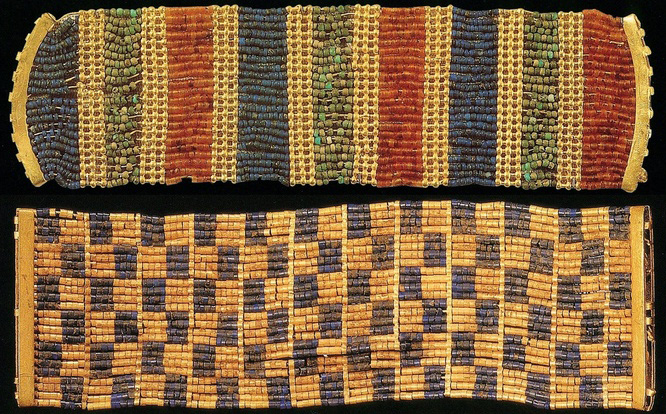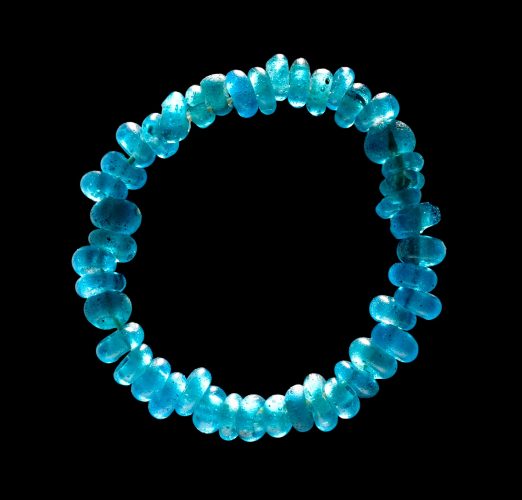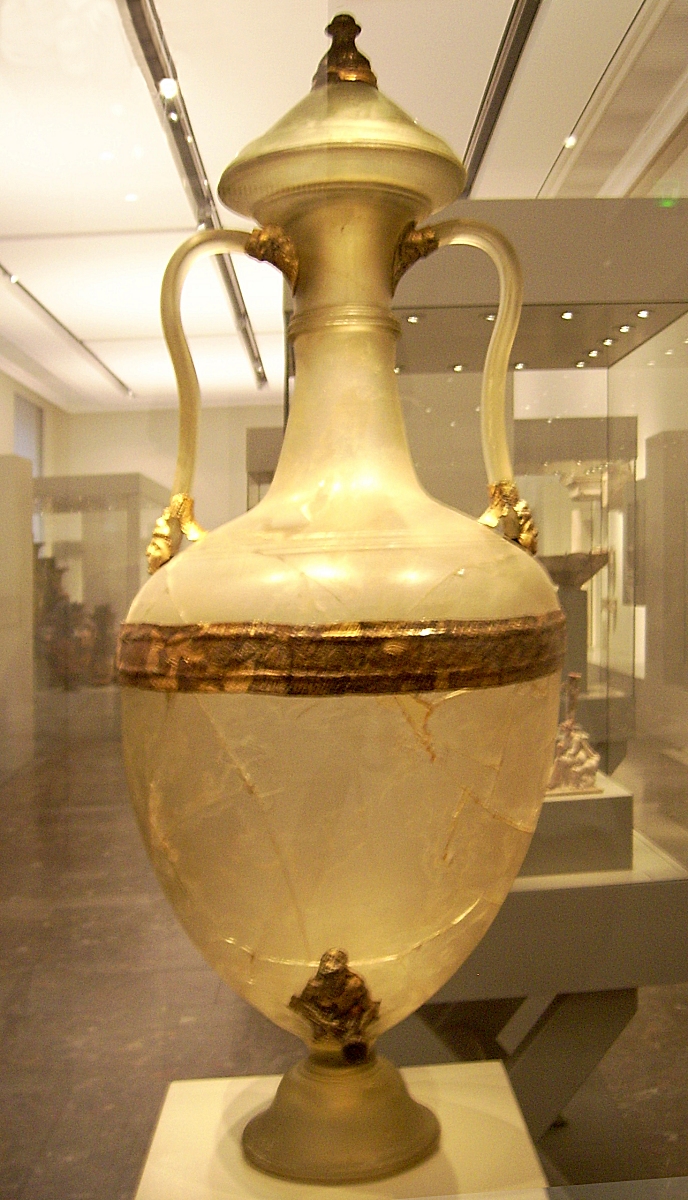Before There Was Glass Blowing Part 2 – The Bronze Age:
As the Chalcolithic Age slowly gave way to the Bronze Age and primitive settlements began to coalesce into powerful urban centres, the desire for individual expression and status – conveyed through personal adornment – intensified rapidly. It is therefore little wonder that the very first evidence we have of man-made glass takes the form of beads, in approximately 4000 BC in ancient Sumeria, jewellers began to create glass glazes which could be applied to plain stone beads in order to create something far more eye-catching.

At the dawn of Bronze Age, there were as yet no glass vessels, and it would be many centuries before glass was utilised for such purposes. During the Neolithic era, the development of more advanced ovens (used to parch cereal grains and to bake bread) had allowed for the manufacture of better and more diverse pottery, and as such, ceramic vessels easily filled the practical needs of people throughout the Near East and beyond. Archaeologists therefore believe that the first glass was created by accident rather than by design; as its development coincides with early metal-working, one theory suggests that glass came about as a by-product of metal-working. A second theory states that it may have originated during the production of faience, a vitreous material which has been called a form of “pre-glass” and which dates back to the great Mesopotamian cities of Ur and Babylon. Faience was created by grinding quartz or sand crystals together with varying quantities of sodium, potassium, calcium, magnesium, and copper oxide. This mixture was then formed into the desired shape (usually an amulet, beads, broach or figurine) through the use of a mould and heated.
Many scholars think it possible, and even probable, that glass was developed independently in several different locations during the Early Bronze Age (most likely Mesopotamia, Egypt, and Syria); despite extensive research, no evidence has been found to support Pliny the Elder’s claim of glass having been produced as early as 5000 BC in Syria. It is also now thought unlikely that the Egyptians invented many of the Bronze Age glassmaking techniques they were famous for; however, they certainly perfected them, producing both superior faience and remarkably beautiful, translucent coloured glass beads in the centuries that followed the initial experimentation of the Mesopotamians.
The Spread of Glass as a Luxury Item: A Symbol of the Sun Cults
While the origins of early decorative coloured glass are still disputed, there is no questioning its popularity throughout the ancient world. Though glass use during the Bronze Age was once thought to be confined to the Near East, the Mediterranean, and Egypt, in 2014 it was revealed that glass beads were traded along vastly expanded networks, reaching as far away as Scandinavia. In Denmark and Northern Germany alone, 290 annular coloured glass beads (in hues of dark blue, green, white, yellow, and even polychrome) have been unearthed in burials dating back to the 14th–12th century BC (about 3400 years ago).

Discovered by an international collaboration between Moesgaard Museum in Aarhus, the National Museum of Denmark in Copenhagen, and Institut de Recherche sur les Archéomatériaux (IRAMAT) in Orléans, France, these early trade routes not only show that mankind’s passion for glass has been unwavering since its earliest development, they also reveal to us new information about the sun cult in the Nordic Bronze Age. Analysis of the chemical composition of Bronze Age coloured glass blue beads found in Scandinavia showed that they originated predominantly in Egyptian glass workshops, while at the same time, analysis of amber beads used in Egyptian burials (notably the burials of pharaohs) has shown many of them to originate from Northern Europe. As both amber and glass had the then-unique quality of being penetrable by sunlight, the research team believes that finding both of these beads together in burials in these regions could be proof of a hitherto unexplored link between the Egyptian sun cult and the Nordic sun cult. It is likely that people in Egypt and Northern Europe believed that the presence of glass and amber could aid in the soul’s journey toward being reconnected with the sun, finding eternal life within its radiance.
The Late Bronze Age: Coloured Glass Diversifies

Glassmaking advanced rapidly during the Bronze Age, and by the Late Bronze Age, techniques in Eqypt began to approach their zenith—as evinced by the glasswork of the Ahhotep “Treasure”. Glass crafting was also becoming a more global phenomenon, with finds from this era cropping up in Western Asia (e.g. Megiddo) as well as in India, Greece, and Crete. By 1500 BC, glass was being considered for practical purposes, with the first glass vessels being produced for the era’s wealthiest citizens. This technology went on to be perfected, particularly by the Greeks, in spite of the many challenges inherent in Bronze Age glass production—the glass amphora from Olbia, now displayed in the Altes Museum in Berlin, is considered a masterpiece of Late Bronze Age glassmaking.
While we know that the alkali of Syrian and Egyptian glass contained soda ash and sodium carbonate (extracted from the ashes of plants, notably halophile seashore plants), many of the exact formulas used by early glass masters have been lost to history owing to the way the techniques and recipes required to create glass from raw materials were often treated in the manner of closely-guarded secrets. It is believed that glass carried such cachet at this time that many rulers wished to reserve its production for the “palace industries” of powerful states, and protective of their source of income and status, many glass masters willingly obliged. Glass-workers outside of the great empires therefore usually relied on the import of glass ingots which could simply be melted down and molded without any formulation required (examples of such ingots were famously found on the Ulu Burun shipwreck off the coast of modern Turkey).
Despite such limitations, glassmaking was to flourish in these regions until the disasters of the Bronze Age collapsed for a time and threatened the very survival of this emerging art form. Fortunately, those same passionate craftsmen who had so closely guarded their coloured glass formulas just as carefully preserved them, and by the 9th century BC, glassmaking was once again underway throughout the Mediterranean and Near East. From there, it was only a matter of time before the advancements of the Iron Age made glass mainstream: In the first century AD, the development of glassblowing by the Romans made glass cheaper than pottery for the first time… And the rest, as they say, is history.
